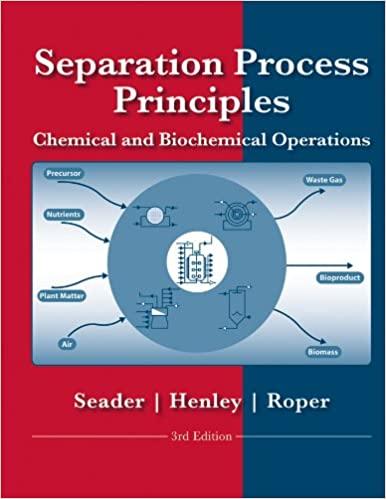The enzyme alcohol dehydrogenase (ADH) catalyzes oxidation of primary and secondary alcohols to aldehydes and ketones. It
Question:
The enzyme alcohol dehydrogenase (ADH) catalyzes oxidation of primary and secondary alcohols to aldehydes and ketones. It can be produced from a culture of Lactobacillus brevis, and recovered from the lysed broth by countercurrent ATPE with a PEG 8000– dextran T-500–water system at 10°C. Assume the clarified feed to the system is 1,000 kg/h containing 0.5 wt% ADH, 98 wt% water, and 1.5 wt% other solutes. From Diamond [110], a tie line for the PEG–dextran–water system has points in weight fractions on the binodal curve at (0.072, 0.003, 0.925) for the upper phase and (0.01, 0.137, 0.853) for the lower phase. For these conditions, the partition coefficient for ADH is 1.0, defined as the weight fraction of ADH in the upper phase divided by that in the lower phase on a solute-free basis. If 167.6 kg/h of dextran D-500 is added to the lysed solution, an extraction factor of 2.0 is desired, and three countercurrent equilibrium stages are used, calculate the:
(a) Kg/h of aqueous PEG 8000 solvent required, and the flow rates of PEG and water in the solvent;
(b) Flow rates in the upper and lower phases; and (c) % extraction of ADH to the upper phase.
Step by Step Answer:

Separation Process Principles Chemical And Biochemical Principles
ISBN: 9780470481837
3rd Edition
Authors: By J. D. Seader, Ernest J. Henley, D. Keith Roper





